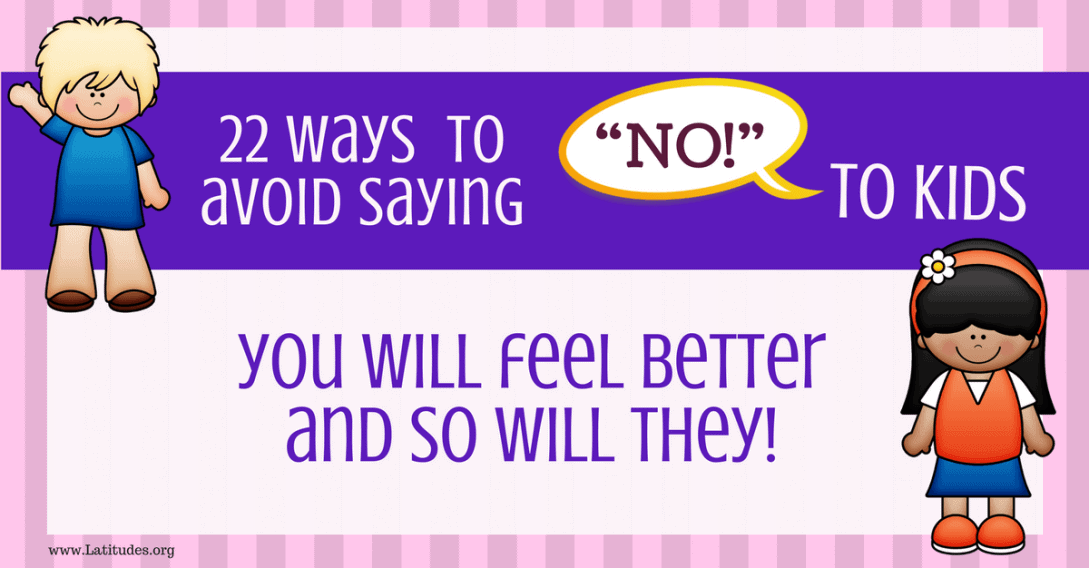22 Ways to Avoid Saying “NO” to Kids
We all know there are times when we must say no, especially when a child is in danger.
But children tend to tune the word out if it is overused.
We suggest you save this two-letter word for when you really need it, when your child really needs to pay attention and react quickly. For other occasions, I think you will enjoy getting familiar with different phrases that will soon become second nature to you.
Children appreciate explanations. I predict you will enjoy communicating in a more meaningful manner, too.
Practice using responses like these, below:
-
- This isn’t helpful, I’d like you to stop.
- Maybe you can do that some other time.
- Here, let me show you how you could do it.
- That’s not what we had talked about doing, remember?
- I know you want to do that but it is dangerous.
- I need you to come away from there right now.
- Let’s try doing something else instead.
- Tell me what our rule is about this.
- This is not a good idea. Can you tell me why?
- I understand you would like to, but we can’t do that now.
- I agree it would be fun, but it’s not a good idea because…
- Is there another way to go about doing that?
- We don’t have time for this right now.
- What you are doing is hurting him/her. You need to stop.
- That is not in our budget. We can’t get it.
- Let’s stop and think about this.
- You know better than to do that.
- Why is this important to you?
- I’m disappointed to see you doing that (or. . . to learn you did that).
- If you want to buy that, you can use your allowance.
- Yes, that’s one answer, but try again.
- We can’t stay longer, we talked about this.
[the_ad id=”34885″]




